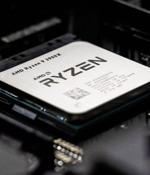Security News

Google has released the monthly security update for the Android platform, adding fixes for 56 vulnerabilities, five of them with a critical severity rating and one exploited since at least last December. The new security patch level 2023-06-05 integrates a patch for CVE-2022-22706, a high-severity flaw in the Mali GPU kernel driver from Arm that Google's Threat Analysis Group believes it may have been used in a spyware campaign targeting Samsung phones.

Google has released the monthly security update for the Android platform, adding fixes for 56 vulnerabilities, five of them with a critical severity rating and one exploited since at least last December. The new security patch level 2023-06-05 integrates a patch for CVE-2022-22706, a high-severity flaw in the Mali GPU kernel driver from Arm that Google's Threat Analysis Group believes it may have been used in a spyware campaign targeting Samsung phones.

Nvidia fixed more than two dozen security flaws in its GPU display driver, the most severe of which could allow an unprivileged user to modify files, and then escalate privileges, execute code, tamper with or steal data, or even take over your device. In total, the chipmaker patched 29 vulnerabilities affecting Windows and Linux products, including 10 high-severity bugs.

NVIDIA has released a security update for its GPU display driver for Windows, containing a fix for a high-severity flaw that threat actors can exploit to perform, among other things, code execution and privilege escalation. The latest security update addresses 25 vulnerabilities on the Windows and Linux GPU drivers, while seven flaws are categorized as high-severity.

A set of five medium-severity security flaws in Arm's Mali GPU driver has continued to remain unpatched on Android devices for months, despite fixes released by the chipmaker. "These fixes have not yet made it downstream to affected Android devices," Project Zero researcher Ian Beer said in a report.

A set of five exploitable vulnerabilities in Arm's Mali GPU driver remain unfixed months after the chip maker patched them, leaving potentially millions of Android devices exposed to attacks. The vulnerability impacts Arm Mali GPU kernel drivers Valhall r29p0 to r38p0.

NVIDIA has released a security update for a wide range of graphics card models, addressing four high-severity and six medium-severity vulnerabilities in its GPU drivers. The security update fixes vulnerabilities that can lead to denial of service, information disclosure, elevation of privileges, code execution, etc.

NVIDIA has published the source code of its Linux kernel modules for the R515 driver, allowing developers to provide greater integration, stability, and security for Linux distributions. The products supported by these drivers include all models built on the Turing and Ampere architecture, released after 2018, including the GeForce 30 and GeForce 20 series, the GTX 1650 and 1660, and data center-grade A series, Tesla, and Quadro RTX. According to the GPU maker, this is a step toward improving its products' experience on the Linux platform, simplifying the integration process in Linux distributions, debugging, and boosting contribution activity.

AMD is investigating an issue in its GPU software suite that causes an auto-adjustment of AMD Ryzen CPU performance settings for users without permission. The chipmaker confirmed the GPU driver bug to Tom's Hardware via a generic statement that didn't give many details, mitigation advice, or estimated fix dates.

US chipmaker giant Nvidia confirmed today it's currently investigating an "Incident" that reportedly took down some of its systems for two days.Systems impacted in what looks like a cyberattack include the company's developer tools and email systems, as first reported by The Telegraph.